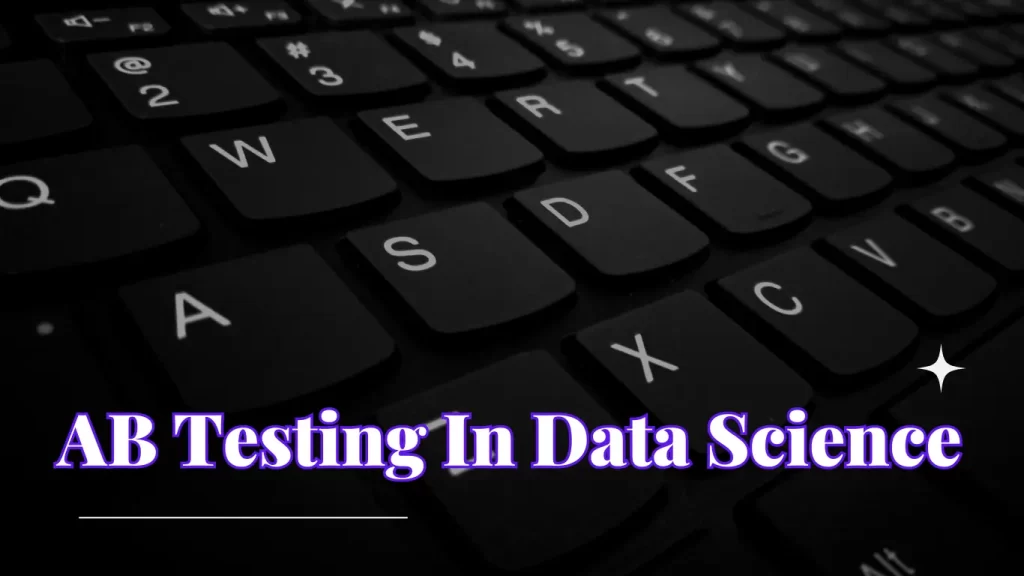AB Testing in Data Science: Unlocking Insights for Decision Making
Reading Time: 5 minutesAB Testing in Data Science: Unlocking Insights for Optimal Decision Making AB Testing in Data Science – In the dynamic landscape of data-driven decision-making, AB testing plays a crucial role in understanding user behaviour, optimizing product features, and driving business growth. This article explores the concept of AB testing in the realm of data science, delving into its methodology, benefits, challenges, and best practices. By harnessing the power of AB testing, businesses can make informed decisions based on statistically significant results, ensuring the success of their products and services. What is AB Testing Data Science? AB testing, also known as split testing, is a scientific methodology used to compare two or more versions of a product or service to determine which one performs better. In the context of data science, AB testing involves conducting experiments with users, where they are randomly assigned to different variants (A and B) and their interactions and behaviors are recorded and analyzed. This method allows businesses to evaluate changes to their products, such as design modifications, feature enhancements, pricing adjustments, or even marketing strategies. By collecting and analyzing data from both variants, organizations can measure the impact of these changes and make data-driven decisions to optimize their offerings. Read Also: A/B Testing in Digital Marketing: The Ultimate Guide How Does AB Testing Work? To conduct an AB test, several steps need to be followed: Define the Objective: Clearly articulate the goal of the test, such as increasing conversion rates, improving user engagement, or boosting revenue. Formulate the Hypothesis: Identify the specific change or variation being tested and hypothesize its impact on the desired metric. For example, “Adding a call-to-action button on the homepage will increase click-through rates.” Randomly Assign Users: Split the users into two or more groups randomly, ensuring an equal distribution across the variants. This randomization helps minimize bias and ensures statistical validity. Implement the Variants: Develop and deploy the different versions of the product, ensuring that only one variable is changed at a time. This isolates the impact of the specific variation being tested. Collect and Analyze Data: Gather relevant data, such as user interactions, click-through rates, or conversion rates, for each variant. Statistical analysis is then performed to determine if the observed differences are statistically significant. Draw Conclusions: Based on the analysis, draw conclusions about the performance of each variant. If one variant significantly outperforms the others, it can be considered the preferred choice. Implement the Winning Variant: Apply the insights gained from the AB test to make informed decisions and implement the winning variant to achieve the desired objective. Get A Free Consultation Benefits of AB Testing in Data Science AB testing provides several benefits for organizations aiming to optimize their products and services: Data-Driven Decision Making: AB testing enables businesses to make decisions based on empirical evidence rather than relying on assumptions or subjective opinions. By analyzing real user data, organizations can identify the most effective changes to implement. Optimization of Key Metrics: Through AB testing, organizations can identify the factors that drive improvements in critical metrics, such as conversion rates, click-through rates, or customer engagement. This optimization can lead to significant business growth and increased profitability. Reduced Risk: By conducting controlled experiments, businesses can mitigate risks associated with implementing changes without a comprehensive understanding of their impact. AB testing allows for incremental and data-driven decision making, minimizing potential negative consequences. Improved User Experience: AB testing helps organizations understand user preferences, behavior patterns, and expectations. By tailoring products and services to meet these needs, businesses can enhance the overall user experience and drive customer satisfaction. Innovation and Iteration: AB testing encourages a culture of innovation by providing a structured framework to test and validate new ideas. It allows organizations to iterate quickly, fostering a data-driven approach to product development. Challenges of AB Testing in Data Science While AB testing offers valuable insights, there are certain challenges that organizations need to be aware of: Sample Size: Achieving statistically significant results requires an adequate sample size. Insufficient sample sizes can lead to inconclusive or misleading findings. It is essential to estimate the required sample size beforehand to ensure the reliability of the results. Duration of Testing: AB tests should run for a sufficient duration to capture different user behaviours and account for variations over time. Running tests for too short a period may not provide a comprehensive understanding of the impact of changes. Multiple Variables: Testing multiple variables simultaneously can complicate the interpretation of results. Isolating a single variable for testing ensures clarity in determining its impact on the desired metrics. Segmentation: Users within a population may exhibit diverse behaviours and preferences. Segmenting users based on relevant characteristics, such as demographics or user types, can provide deeper insights and drive personalized decision-making. Interpretation of Results: Analyzing the results of an AB test requires a solid understanding of statistical concepts and methodologies. Incorrect interpretation of results can lead to erroneous conclusions and misguided decision-making. Read Also: How to Use A/B Testing to Improve Your Digital Marketing Results Get A Free Consultation Best Practices for Successful AB Testing in Data Science To maximize the effectiveness of AB testing, consider the following best practices: Clearly Define Objectives: Clearly articulate the specific goals and metrics to be measured before conducting the AB test. This clarity ensures alignment across the organization and facilitates accurate evaluation of the results. Ensure Randomization: Randomly assign users to different variants to minimize bias and ensure statistical validity. This randomization helps create a representative sample and ensures that the observed differences are not due to pre-existing user characteristics. Focus on a Single Variable: Test one variable at a time to isolate its impact on the desired metric. This approach allows for clearer conclusions and prevents confounding factors from affecting the results. Monitor Duration: Determine the appropriate duration for the test based on the expected user behavior and the desired level of statistical significance. Longer durations may be required for low-frequency events or when assessing long-term impacts. Leverage Statistical Methods: Employ
AB Testing in Data Science: Unlocking Insights for Decision Making Read More »


